 Sleep is not just rest, it is also how our body repairs, revives and re-energizes for the next day. Which is why having the perfect space to rest and recover in is so vital for a healthy happy life. Our bedrooms are our safe space made to make us feel as at home and comfortable as possible.
Sleep is not just rest, it is also how our body repairs, revives and re-energizes for the next day. Which is why having the perfect space to rest and recover in is so vital for a healthy happy life. Our bedrooms are our safe space made to make us feel as at home and comfortable as possible.
Even, the colors in your bedroom can effect the quality and amount you sleep. It may seem surprising, but the colors in your bedroom can affect your mood, which in turn affects your sleep. So before you choose a color to paint your whole bedroom, or buying a new bedding set, we suggest you take a look at which colors are the best for promoting relaxation and healthy sleeping habits.
What is the Psychology Behind Colors?
Why is choosing the right color so important? Every marketing guru knows that colors are like magic. The same goes for sleep. Colors can influence your emotions and your state of mind. For example, some studies have shown that looking at the color red increases the heart rate and adrenaline flow. If that happens before bed, you can only imagine how it might make you sleep.
 Here's how colors affect your behavior. Different colors impact your mood, which makes you behave differently. Remember the color red? There's a reason bull fighters use a red cape. And targets are red. They increase passion, even anger, and excitement. Other affects that colors may have are the taste of food, and how warm or cold something feels. This makes sense; we even label them warm and cool colors. If you can understand the way colors affect you, you can decorate more functionally, especially for sleep.
Here's how colors affect your behavior. Different colors impact your mood, which makes you behave differently. Remember the color red? There's a reason bull fighters use a red cape. And targets are red. They increase passion, even anger, and excitement. Other affects that colors may have are the taste of food, and how warm or cold something feels. This makes sense; we even label them warm and cool colors. If you can understand the way colors affect you, you can decorate more functionally, especially for sleep.
Specifically, this is how colors affect sleep. Toned down or muted shades promote better sleep than more vibrant primary ones. Also, this isn't just an old wives tale. These recommendations are data-driven. Proving that the best bedroom colors for sleep go beyond just opinion. A study of over 2,000 Travelodge hotels helped determine which colors help and hurt sleep. It is also recommended to use a flat finish over glossy. This helps colors appear softer, and softer means sleepier.
Based on color psychology, research, and the recommendations of sleep specialists, below are the best bedroom colors for sleep, as well as the worst:
What Are The Best Bedroom Colors For Sleep:
BLUE is the BEST color for sleep!
Blue is absolute best color for sleep. Blue is calming. Calming is sleep. The eyes even have special receptors in the retinas called ganglion cells, which makes the brain especially receptive to blue. If there is one thing you can do right, it's paint your bedroom blue. Without a doubt this holds the place at the top of our list for the best bedrooms colors for sleep.
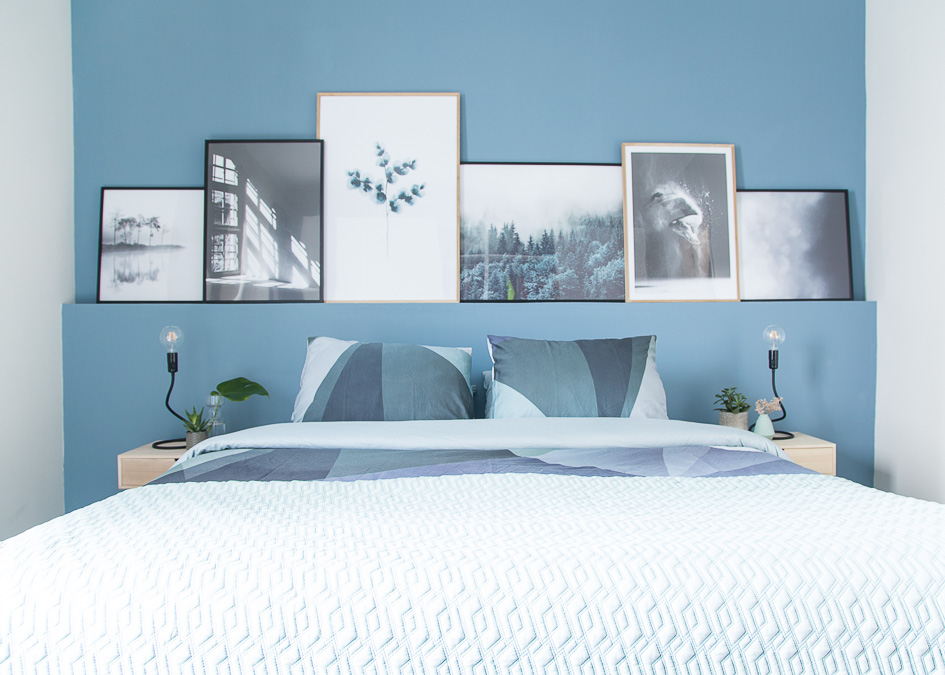
Light Blue is subtle, enjoyable and very relaxing.
According to the same Travelodge study, guests with a blue room slept approximately 7 hours and 52 minutes. The average person doesn't even get 7 hours of uninterrupted sleep. Clearly blue takes the lead.
Still not convinced? Nearly 60% of those guests reported waking up happy in a blue room. Makes sense, who wouldn't wake up happy after all that great sleep?
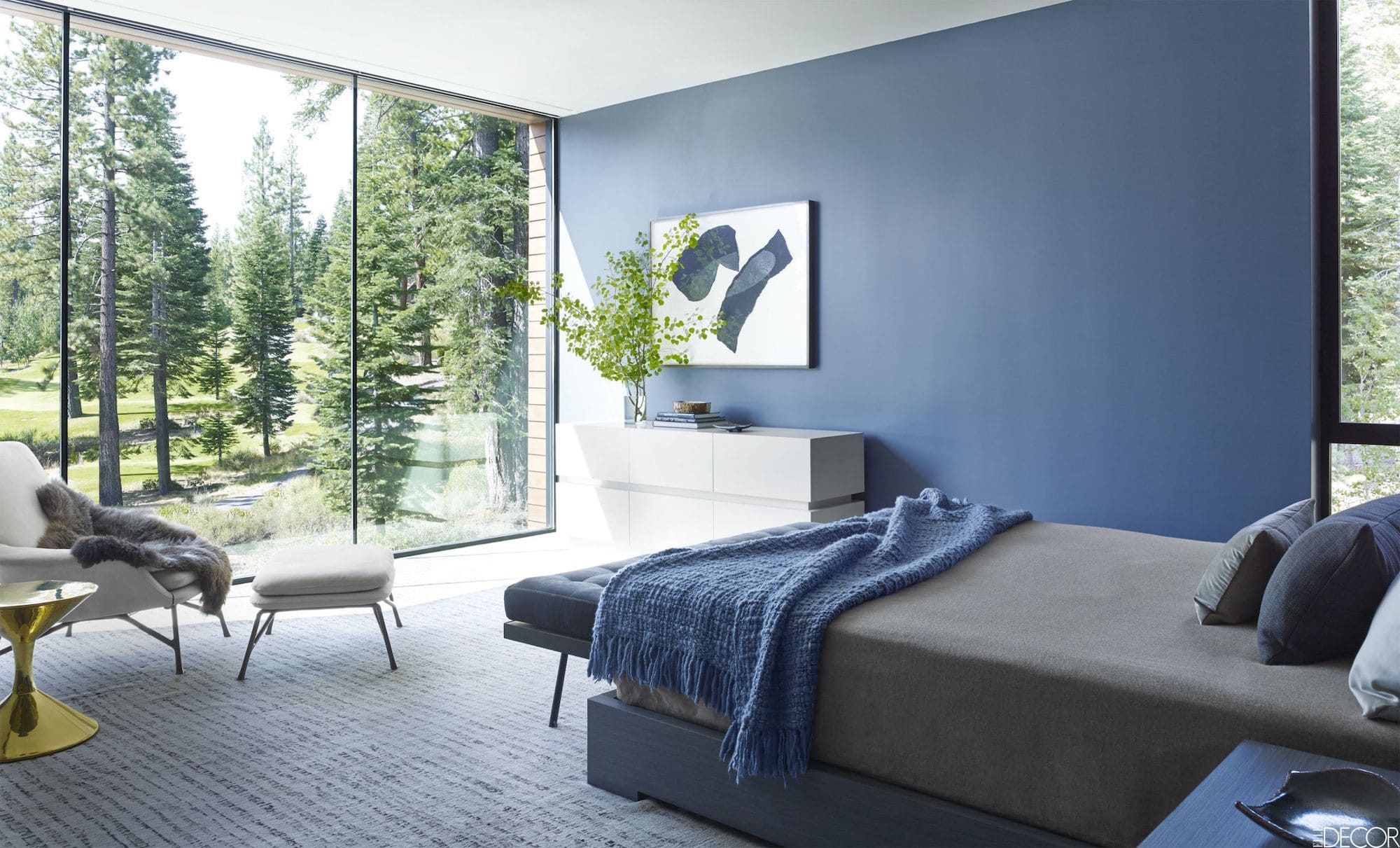
A deeper Blue is more grounded and dramatic.
Other Great Bedroom Colors For Sleep:
If you absolutely cannot stand blue, some other colors make for a good night's sleep as well:
Yellow Is Happy:
Yellow is the second best color to choose for sleep. Participants got 7 hours and 40 minutes of sleep. And you can definitely wake up happy to yellow, sunshine walls.
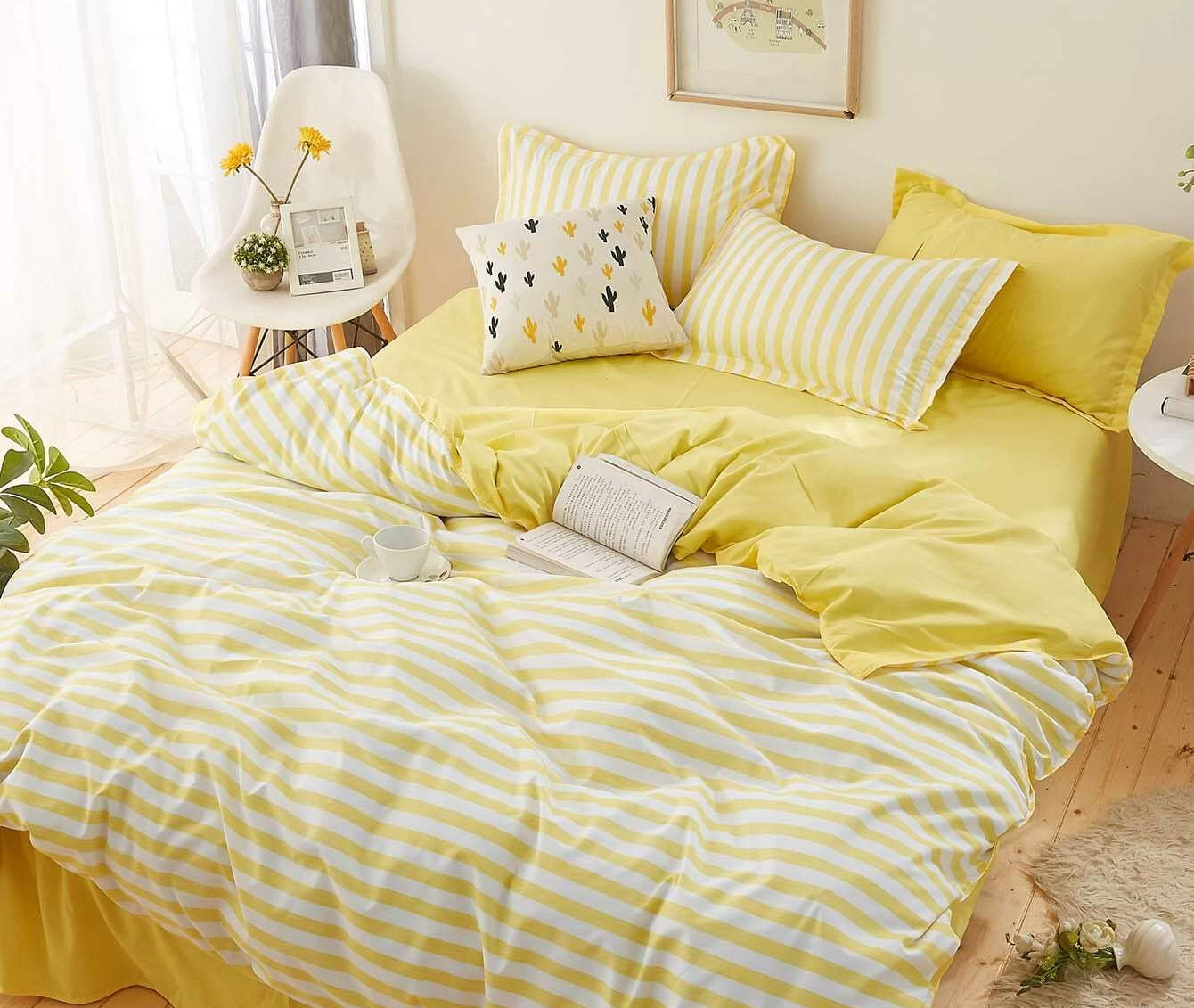
A soft Buttercup Yellow is dreamy yet cheery.
Green is Organic:
Participants in a green room slept 7 hours and 36 minutes. Green is an organic color that reminds us of nature. People also reported waking up feeling upbeat and positive.
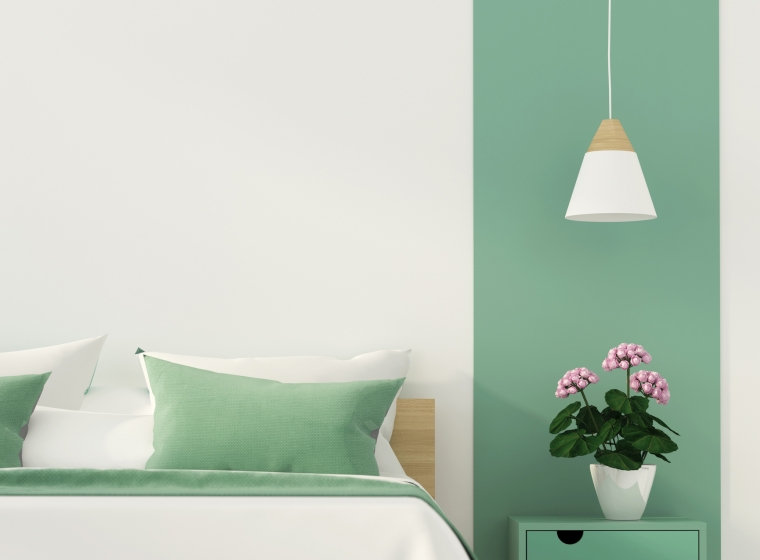
The right shade of Green feels natural and peaceful.
Silver is Peaceful:
Silver is a unique color, but still conducive for sleep. Sleepers in a silver room got 7 hours and 33 minutes of sleep. Silver is a great color if you like more neutral colors, but still want to get some peaceful rest.
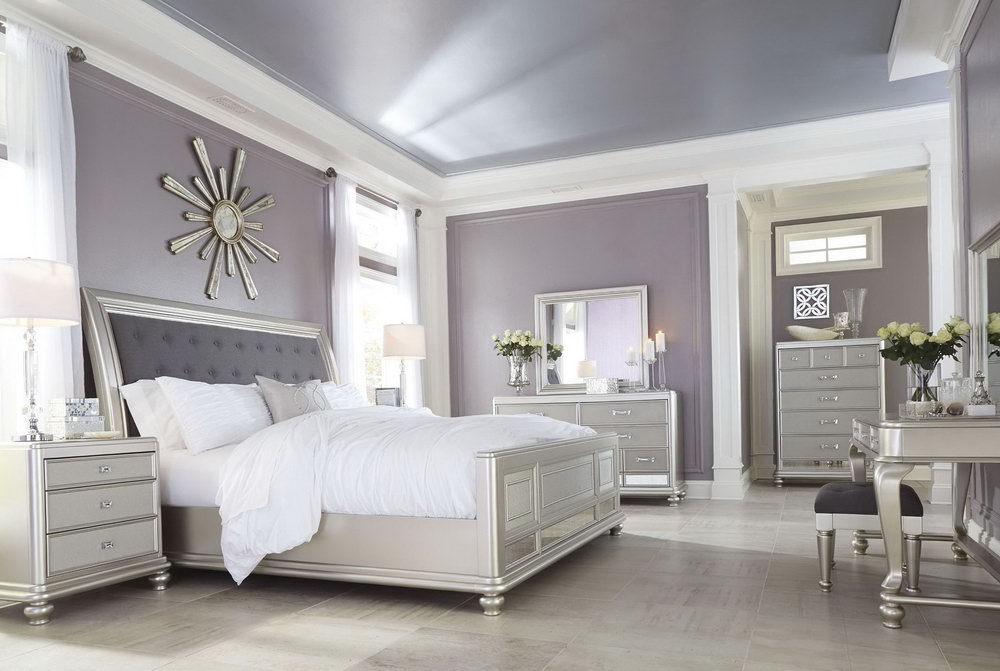
The opulence of Silver is dramatic yet sophisticated.
Orange is Warm:
It may not be your first choice but participants in an orange room enjoyed 7 hours and 28 minutes of sleep. Orange is a good color because it is warm and happy. It is also said that orange helps with indigestion, which could be keeping you awake at night as well.
When it comes to selecting a bold color for the bedroom, we always suggest leaning toward a natural version of that color. For example we went with a terracotta or clay orange that has brown undertones, rather than a crayola orange color. This is what gives it such a relaxing vibe for an orange color.
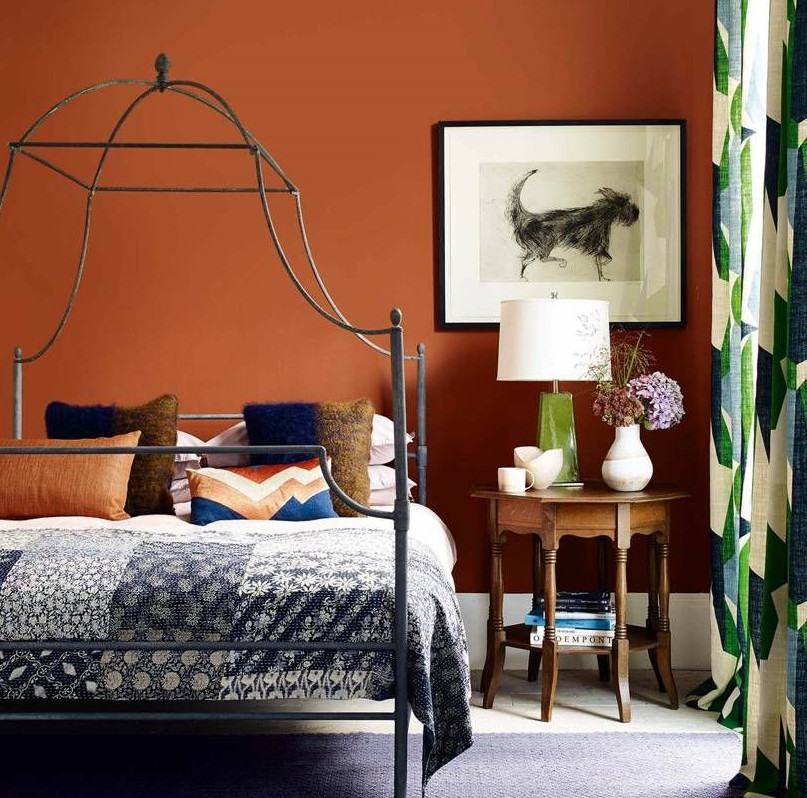
Choosing Orange may seem daring but the right shade can be fun.
Pink is Soft:
This is one of our top color choices for a bedroom, especially if you pick a soft muted pink color that is more natural and close to a skin tone than a pretty pony. A soft natural pink tone is comforting and typically has soft orange undertones. Feng Shui often suggests using gentle colors that are similar to skin tones because they give us a calm zen like feeling. We suggest against choosing a hot pink color as it gets too close to the red family which is aggressive, energetic, and difficult to sleep around.
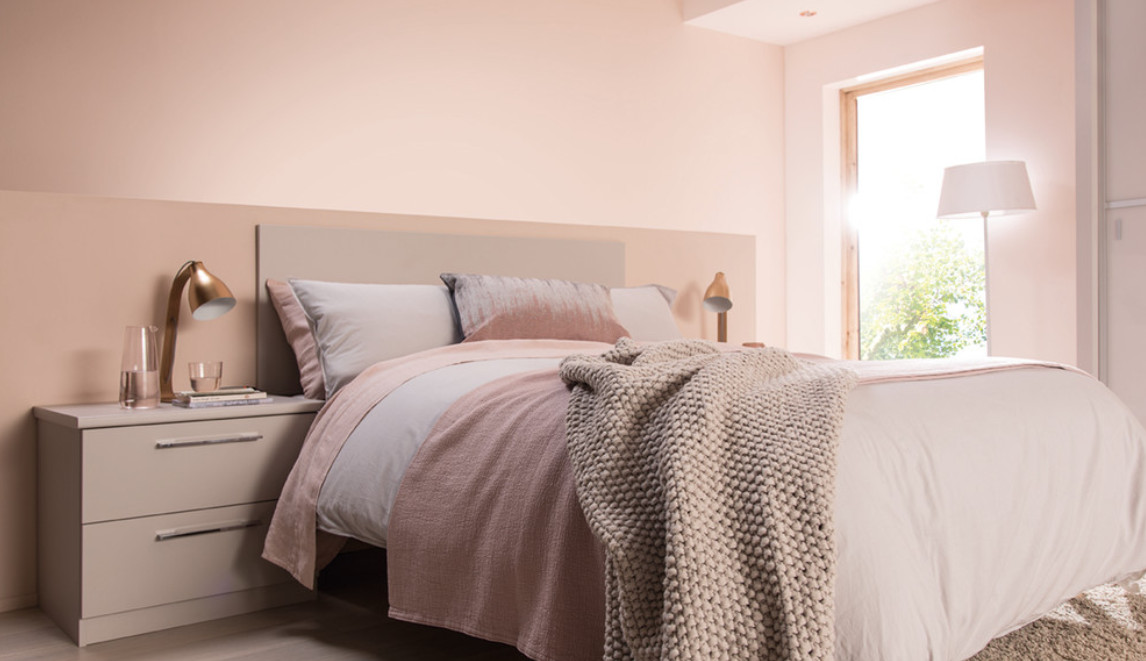
Blush and mauve based pinks can create a soft feminine bedroom look.
Click the link to learn more about the Rules of Feng Shui in The Bedroom, and see if these rules can help you sleep better.
What Are The Worst Bedroom Colors For Sleep?
With all those sleepy colors to choose from above, beware of the least sleepy ones! Participants with these various room colors slept less than 7 hours of sleep. So whatever you do, don't paint your bedroom these colors:
Purple is Stimulating:
Guests only received 5 hours and 56 minutes of sleep. Purple is hands down the worst color for sleep. It is actually a mentally stimulating color, so it keeps the mind awake. Purple increases your creativity. This might be great during the day, but creates more vivid nightmares at night.
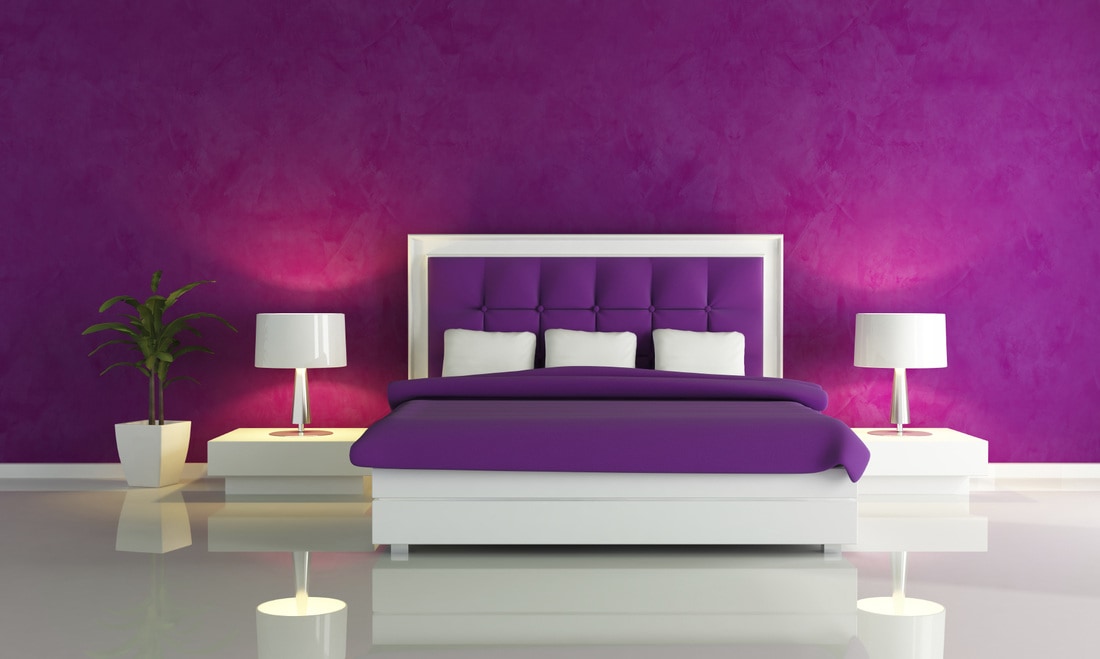
Purple may seem like a good choice, but it isn't very peaceful.
Gray is Uninspiring:
Sort of like silver right? Nope. Gray can be depressing and uninspiring, especially is it is on the darker side. Participants only slept 6 hours and 12 minutes per night when sleeping in the gray bedroom.
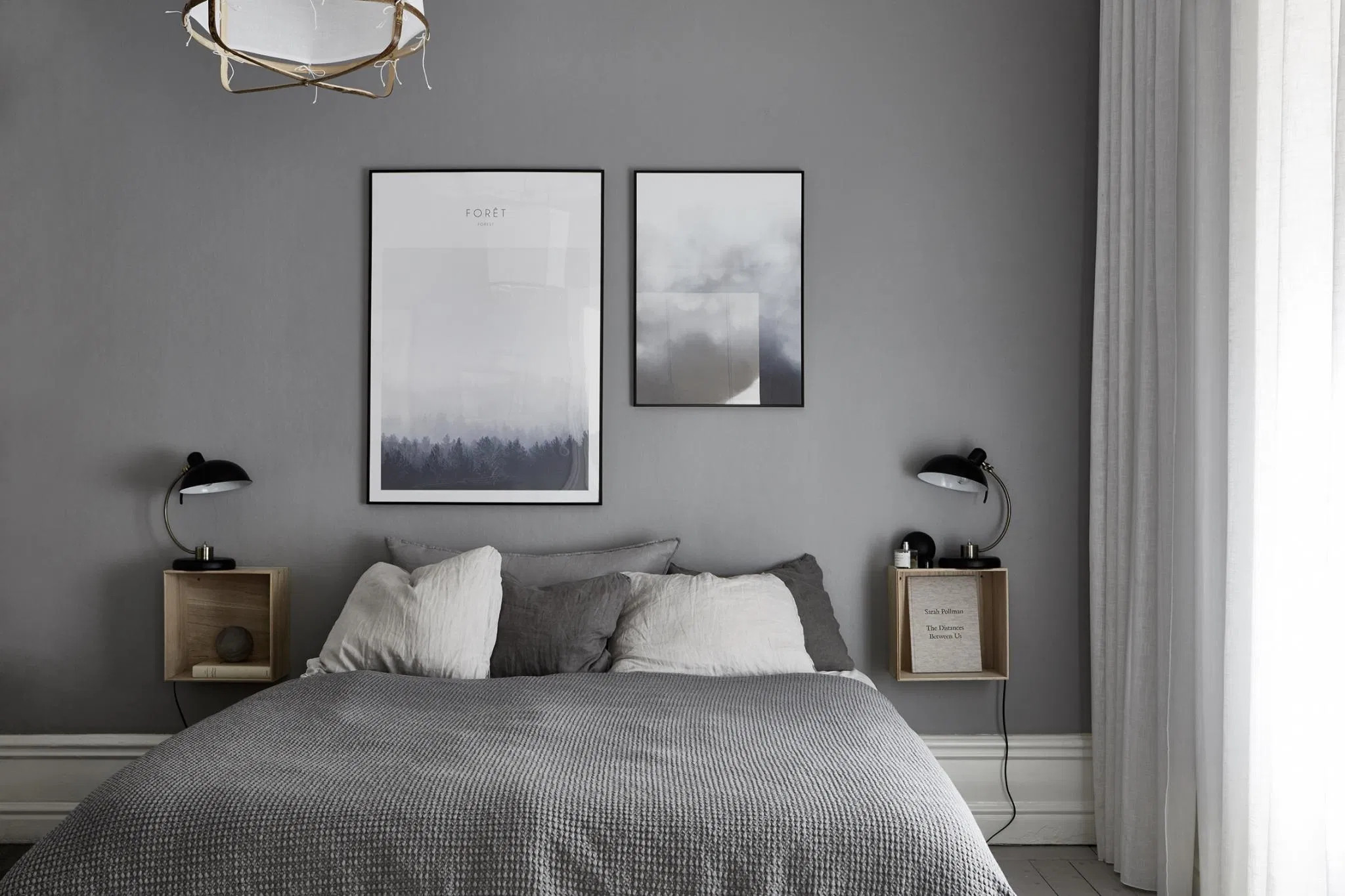
Though similar to Silver, Gray just isn't nearly as inviting. Silver is chrome and bounces light back into the room, while gray tones are flat.
Brown is Gloomy:
Brown is yet another drab and gloomy color. Just think about brown, gives you sort of a frown doesn't it? Brown is said to actually increase restlessness. That is a sure fire way not to sleep.
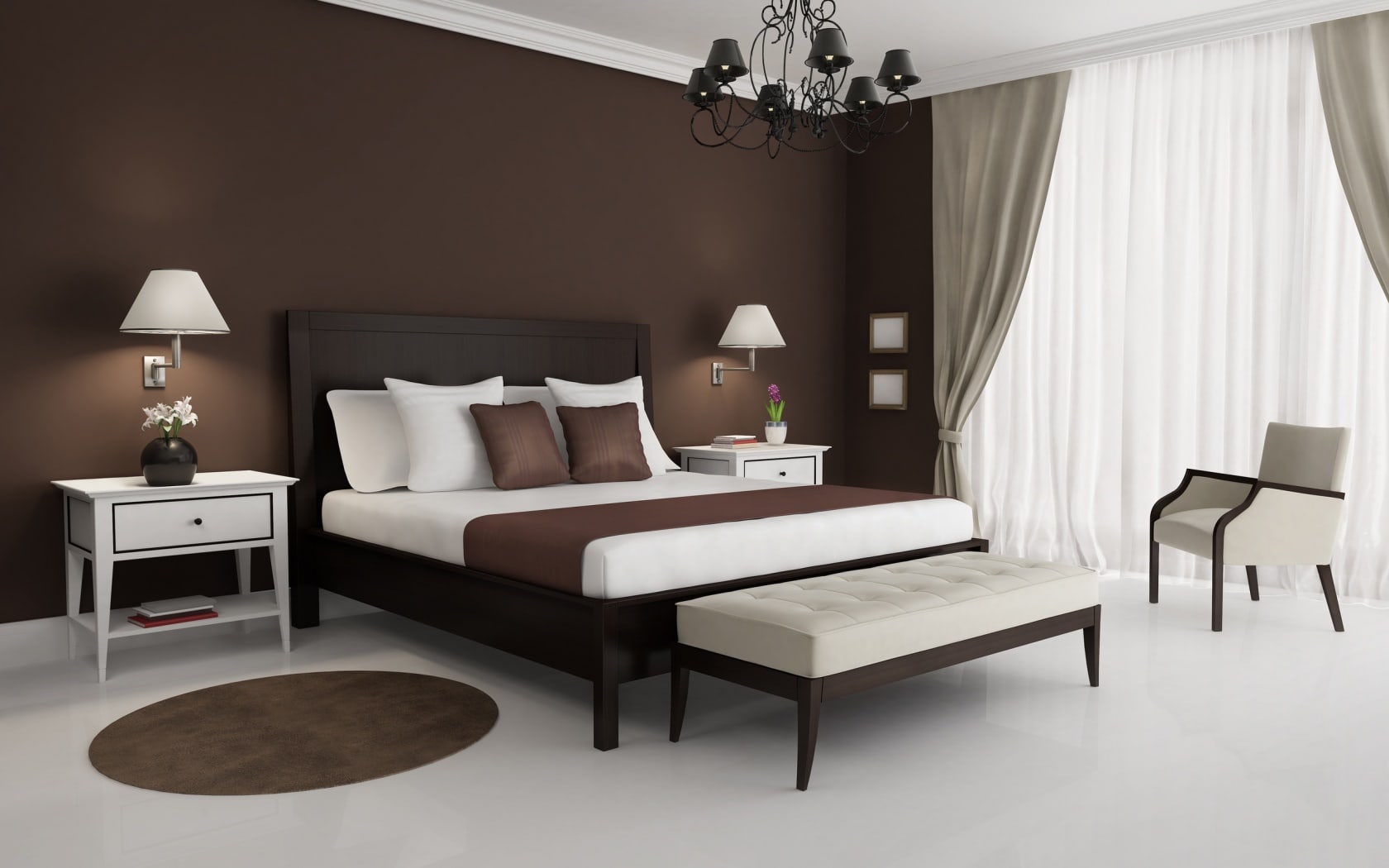
If you want a gloomy cave like room, than Brown may be okay.
Red is Energetic:
Although not the worst color like you may have guessed. Red is passionate and energetic. It can increase your blood pressure and help you move faster. This is definitely not what you should be doing before sleep. Stay away from red.
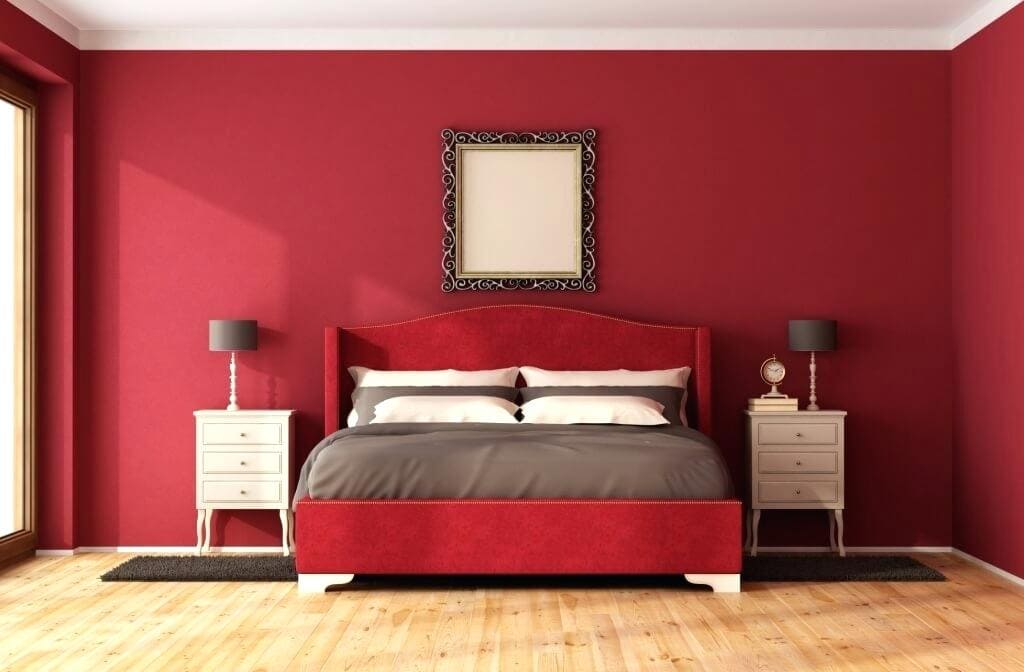
Though beautiful, Red may keep you awake opposed to help you sleep.
Tips For Choosing Soothing Colors For Sleep:
Here are a few other thoughts that color psychology has to say about sleep. Even if you choose a sleep-conducive color, choose a light, pastel, or mute shade. According to bedroom feng shui, these tones can promote positive energy flow.
Feng Shui also suggest painting your bedroom in natural tones, or even skin tones. If a color is too bold or bright, it will actually stimulate and excite you. Do yourself a favor and save these colors for the living room.
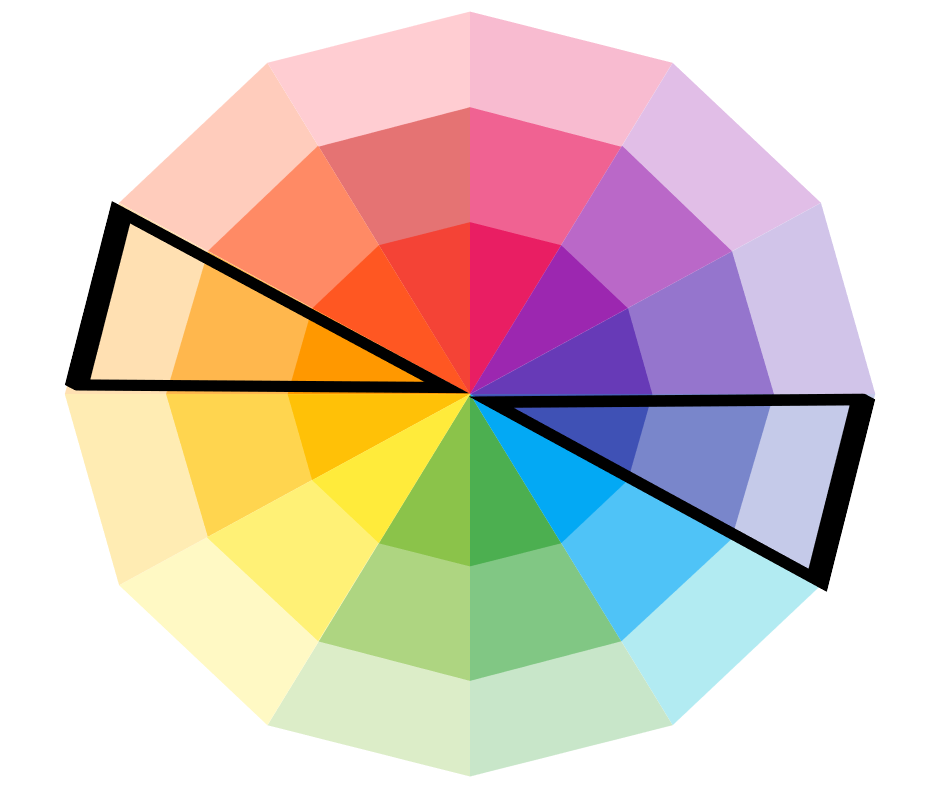 As mentioned above, use a flat paint instead of an eggshell or glossy finish. A glossy finish will reflect light, while a flat finish will absorb it. This will make the room stay darker and feel softer.
As mentioned above, use a flat paint instead of an eggshell or glossy finish. A glossy finish will reflect light, while a flat finish will absorb it. This will make the room stay darker and feel softer.
It's not all about the walls. Be mindful of the accent color you choose for your bedroom décor as well. Colors should be complementing, not contrasting.
Complementing colors will be parallel on the color wheel, as you can see demonstrated on the color wheel on the right. These complimentary colors do just that, complement one another. Contrasting colors will stimulate the mind and keep you awake. Being more awake is of course, the opposite of our goal.
Create your own zen bedroom space and maximize your sleep every night! Click HERE to learn how to create the best sleeping environment, and fall asleep on a cloud.
What Are The Best Bedroom Colors for Sleep?
Overall the best colors for sleep that you can use in a bedroom environment is going to be natural soft colors that are not overly pigmented or stimulating. We suggest sticking to soft blues, yellows, pinks, greens, silver or oranges for the most part. Typically we suggest staying away from anything too dark or bright. As these tend to be depressing or overly stimulating.
Colors like red, purple, brown, or dark gray are the colors we find to be the least suitable for a relaxing sleep environment. If you absolutely love one of those colors we suggest using it as an accent color to another more dominant relaxing color that is complimentary to your more stimulating colors. This will allow you to have your favorite colors without it being so dominating that it makes it difficult to sleep in.
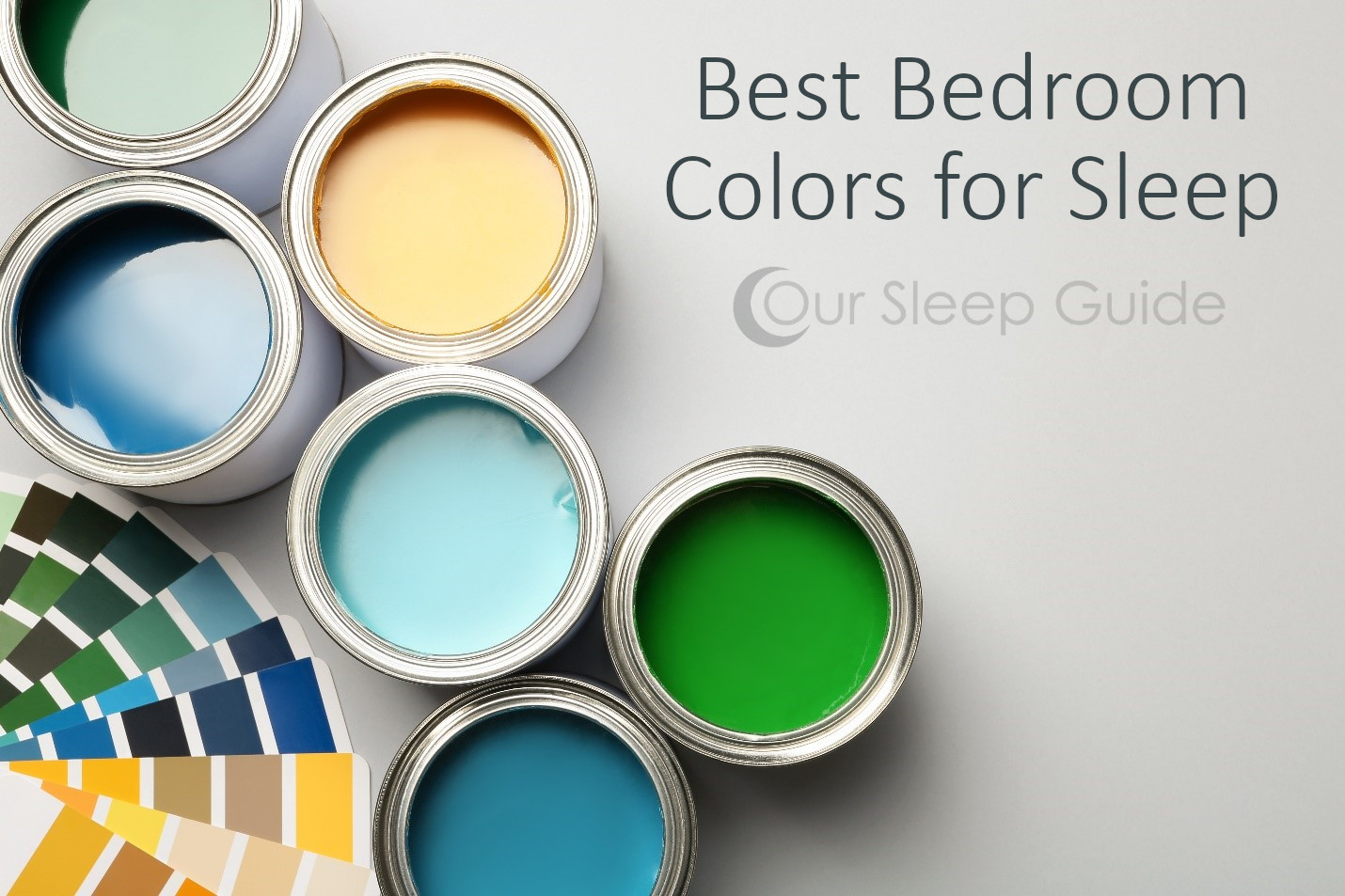
More Bedroom Inspiration:
Once you pick out your best bedroom colors for sleep, makes sure you are sleeping soundly on a comfortable mattress too. Learn all you need to in Our Mattress Guide and make sure take advantage of all the Coupons we offer in our Mattress Reviews.
Any questions in your bedroom or mattress journey let Our Sleep Guide know how we can help. Simply Contact Us and we will answer any questions you may have.
Also, thanks to the Art Therapy Blog and their great advice on the psychology of colors.
![]()
 Sleep is not just rest, it is also how our body repairs, revives and re-energizes for the next day. Which is why having the perfect space to rest and recover in is so vital for a healthy happy life. Our bedrooms are our safe space made to make us feel as at home and comfortable as possible.
Sleep is not just rest, it is also how our body repairs, revives and re-energizes for the next day. Which is why having the perfect space to rest and recover in is so vital for a healthy happy life. Our bedrooms are our safe space made to make us feel as at home and comfortable as possible. Here's how colors affect your behavior. Different colors impact your mood, which makes you behave differently. Remember the color red? There's a reason bull fighters use a red cape. And targets are red. They increase passion, even anger, and excitement. Other affects that colors may have are the taste of food, and how warm or cold something feels. This makes sense; we even label them warm and cool colors. If you can understand the way colors affect you, you can decorate more functionally, especially for sleep.
Here's how colors affect your behavior. Different colors impact your mood, which makes you behave differently. Remember the color red? There's a reason bull fighters use a red cape. And targets are red. They increase passion, even anger, and excitement. Other affects that colors may have are the taste of food, and how warm or cold something feels. This makes sense; we even label them warm and cool colors. If you can understand the way colors affect you, you can decorate more functionally, especially for sleep.










 As mentioned above, use a flat paint instead of an eggshell or glossy finish. A glossy finish will reflect light, while a flat finish will absorb it. This will make the room stay darker and feel softer.
As mentioned above, use a flat paint instead of an eggshell or glossy finish. A glossy finish will reflect light, while a flat finish will absorb it. This will make the room stay darker and feel softer.

